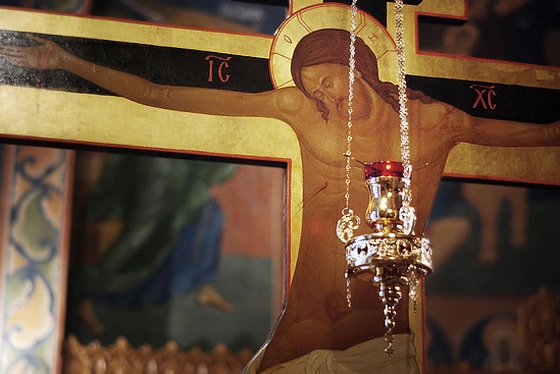
Holy Week is a great opportunity for learning about Orthodoxy.
In 2023, the Orthodox Church will be celebrating Christ’s Resurrection on Saturday midnight/Sunday morning, April 15/16. Because Orthodox Easter falls one week after Western Easter, this will give those interested in Orthodoxy an opportunity to learn about Orthodoxy by attending the Holy Week services.
Holy Week begins on the evening of Palm Sunday and reaches a climax on the evening of Great Saturday. Most Orthodox parishes will be having services every day in Holy Week and sometimes multiple services in a day. If you are planning to attend a Holy Week service, be sure to contact the local Orthodox parish or visit their website.
These services are more than a ritual reenactment of the last days of Jesus Christ’s life on earth. There is a sacramental reality to the services. In a very real way we are there with Christ and his disciples. In Revelation 1:10, the Apostle John notes that he was “in the Spirit” on the Lord’s Day. It was by the grace of the Holy Spirit that he was able to experience the reality of heaven where Christ, the saints, and the angels dwell. So likewise, the key to the Holy Week services is listening to the chants and prayers with a heart open to the Holy Spirit.
Through the Holy Week services we participate in the events described in the Gospels. We are there with the disciples watching Jesus confronting the Pharisees and the Jewish leaders. We are there listening to Jesus giving the Upper Room discourse. We are there beholding Jesus’ being condemned by the Jewish leaders and by the Roman governor Pontius Pilate. We are there with the Virgin Mary and the beloved Disciple at the foot of the Cross. We are there as Jospeh of Arimathea and Nicodemus lay Jesus’ body in the tomb. And, we are there as the women make their way to the tomb to annoint Jesus’ body.
Holy Week is like a spiritual roller coaster ride with incredible highs and lows. The best way to learn about Orthodoxy is not by reading books but by attending the services. Come and see!
Below is a description of the services held during Holy Week.
Bridegroom Service
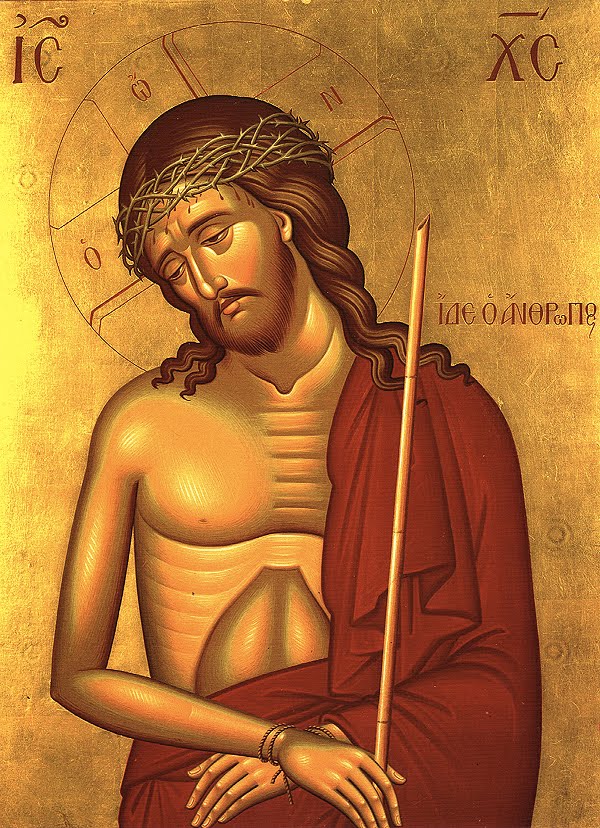
The Bridegroom Service is held Sunday, Monday, and Tuesday evenings. The theme of the bridegroom comes from the Parable about the Ten Virgins who are waiting for the coming of Bridegroom (Matthew 25:1-13). Those who are spiritually ready will be welcomed into the marriage feast, while those who are not ready will be shut outside.
Troparion (hymn)
Behold, the Bridegroom cometh in the middle of the night, and blessed is that servant whom He shall find watching; and again unworthy is he whom He shall find heedless. Beware, therefore, O my soul, lest thou be overcome with sleep, lest thou be given up to death, and be shut out from the Kingdom. But rouse thyself and cry: Holy, Holy, Holy art Thou, O God, through the Mother of God, have mercy on us.
Hymn of the Bridegroom Service
Holy Unction Service
The Holy Unction Service is held on Wednesday night. The theme of the service is the healing of our souls, minds, and bodies. Passages from Scripture relating to Christ healing the sick are read out loud. Interspersed with the Scripture readings are hymns about Judas’ fall into apostasy interspersed with hymns about the rise of the woman who annointed Jesus. At the end of the service the Orthodox faithful go up to be annointed with Holy Chrism.
The Sacrament of Holy Unctiion
Holy Thursday – Twelve Gospels
On the evening of Holy Thursday, the Orthodox Church reads out loud from all four Gospels passages relating to Jesus’ Passion in twelve separate readings. In this very moving service, we hear of Judas’ betrayal of Christ, Peter’s denial of Christ, Christ being condemned by the Jewish leaders and by the Roman governor, his crucifixion, ending with his burial. After each Gospel reading a candle in the candelabra is lit. By the end of the service, all twelve candles are blazing with light in the darkened church.
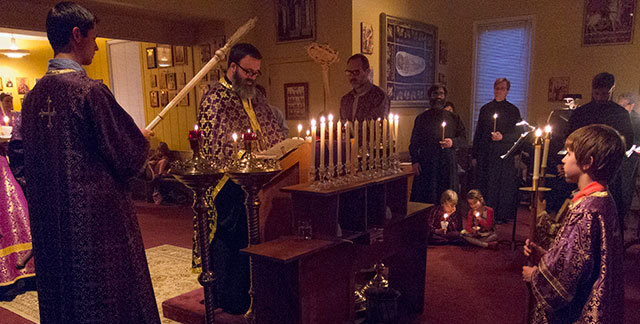
In the middle of the Twelve Gospels, the priest comes out carrying a life-sized icon of the crucified Christ. He processes around the church interior then erects the icon of the crucified Christ up in the front of the nave. At the end of the service people will line up to bow down and kiss the feet of the crucified Christ. We are reminded that Christ died to save us from our sins, and we respond with faith and love.
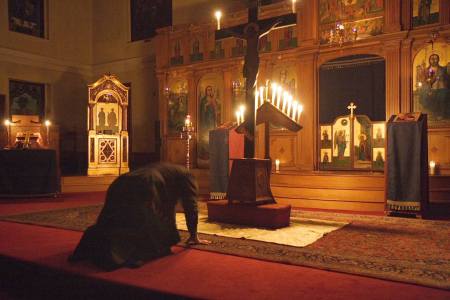
Holy Friday Service
On Holy Thursday night, the Orthodox Church commemorates Christ’s death on the Cross. Then on Friday night, it commemorates the Body of the Crucified Christ being reverently lowered from the Cross and lovingly placed in the sepulcher (tomb). Unlike graves dug in the ground, in first-century Palestine graves were often dug horizontally into the hillside and covered with a massive circular stone.
Visitors not familiar with Orthodoxy might wonder about the wooden object being carried around the church interior then outside the church. They might hear about a mysterious object called the epitaphio–a cloth embroidered with the image of Christ’s crucified body. The embroidered image is placed on the Holy Table, a wooden table with four pillars that support a domed roof symbolizing the sepulcher in which Christ’s Crucified Body would be placed. Carrying the epitaphio in procession around the parish is much like a being part of the honor guard for Christ’s funeral procession. In grief and love we carry Christ’s body to the tomb.
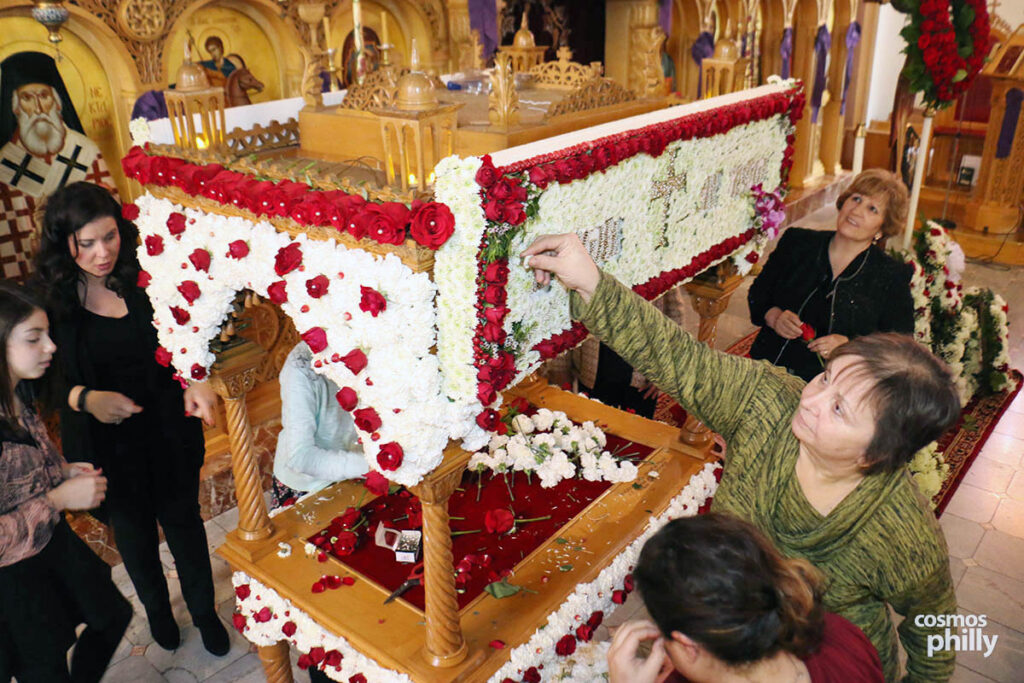
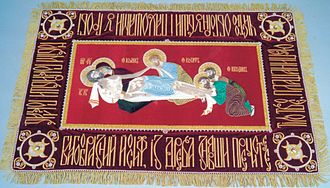

Basically, the Good Friday service is a lamentation service in which the Orthodox Church laments the death of our God and Savior Jesus Christ. During the service a long hymn with many stanzas will be sung. The lamentations are profoundly rich reflections on Christ’s death on the Cross. Below is a sample of the stanzas that will be sung on Good Friday.
Today He who hung the earth upon the waters is hung upon the Cross. He who is King of the angels is arrayed in a crown of thorns. He who wraps the heavens in clouds is wrapped in the purple of mockery. He who in Jordan set Adam free receives blows upon His face. The Bridegroom of the Church is transfixed with nails. The Son of the Virgin is pierced with a spear. We venerate Thy Passion, O Christ. Show us also Thy glorious Resurrection. [Fifteenth antiphon]
YouTube: “Εγκώμια – The Lamentations – 1st, 2nd & 3rd Stasis – Holy Friday“
Holy Saturday Morning
Holy Saturday morning marks the period between Christ’s death and his resurrection. On Holy Saturday morning, the Orthodox Church celebrates Christ’s descent into Hades. Having died on the Cross, Jesus Christ the God-Man enters into the realm of the dead in order to liberate them from the power of Death. As a flesh-and-blood man Jesus enters the realm of the dead, yet as Undying Life he overwhelms Death and Hades. This is the basis for the paradoxical statement: By death Christ destroyed Death.
In Hebrews 2:14-15 we read:
Since therefore the children share in flesh and blood, he himself likewise partook of the same nature, that through death he might destroy him who has the power of death, that is, the devil, and deliver all those who through fear of death were subject to lifelong bondage. (RSV)
Here we see the motif of Christus Victor – Jesus Christ who conquers and defeats death, the ancient enemy of humanity. In many Orthodox parishes, Holy Saturday services are marked with the priest walking down the aisle throwing rose petals left and right in joyful anticipation of Christ’s impending Resurrection.

Daniel Manzuk wrote “Great and Holy Saturday: The Forgotten Feast” in which he explains the significance of Holy Saturday. On Holy Saturday morning, a subtle shift takes place between the despondency of Good Friday and the ecstasy of Pascha. One could say that Holy Saturday marks the transition from the black darkness of the night to the early glow on the horizon. Much of the sky is still shrouded in black but those who keep watch know that in a short while brilliant sunlight will break forth over the horizon ushering in the New Day.
Great and Holy Pascha
On the Great and Holy Feast of Pascha, Orthodox Christians celebrate the life-giving Resurrection of our Lord and Savior Jesus Christ. This feast of feasts is the most significant day in the life of the Church. It is a celebration of the defeat of death, as neither death itself nor the power of the grave could hold our Savior captive. In this victory that came through the Cross, Christ broke the bondage of sin, and through faith offers us restoration, transformation, and eternal life. (Source)
Orthodox Christians will come to church late Saturday night to celebrate Pascha (Orthodox Easter). Typically, the Pascha celebration takes place from around 11 p.m. Saturday night to 2 a.m. Sunday morning. It is actually a series of services, each with a particular theme, that culminates in the Divine Liturgy and the reading of Saint John Chrysostom’s Paschal homily. The famous sermon concludes with the unforgettable call and response: Christ is Risen! Truly He is Risen!
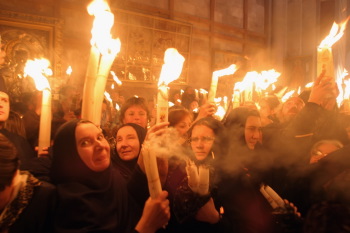
Christos Anesti! (Christ is Risen!)
Many non-Orthodox will find it hard to believe that Orthodoxy celebrates Easter Saturday midnight. Back when I was a curious Protestant, I called the local parish and did not believe the secretary when she told me that the Easter service would be Saturday midnight. I came to the church on Sunday morning and to my surprise and bewilderment heard lay people reading from the Bible in their own languages. This was not the Orthodox Easter service but the Agape Vespers service.
If this is your first time, please call the local parish ahead of time to inquire about the schedule of services. It also helps to inquire about the availability of parking and if one should plan on coming earlier.
One other word of advice, be sure to get a candle when you enter the church. Everyone there will have a candle. At a certain point in the service, all the lights inside the church will be extinguished. Then the priest will come out from the altar area announcing Christ’s resurrection. He will walk down the aisle lighting people’s candle. Then people will light their neighbor’s candles. Soon, the entire interior will be filled with candle light and the joyous refrain: “Christ is Risen! Truly He is Risen!”
Sunday Morning – Agape Vespers
On most Sunday mornings, it is the priest who reads the Gospel, but in the Agape Vespers service lay people will read out loud John’s Gospel 20:19-25 in their respective languages. This is done to demonstrate the universality of the Good News of Christ’s Resurrection. In comparison to the exuberant celebration of the Pascha service, the tone of the Agape Vespers is much more subdued and reflective.

Service Text for Agape Vespers (PDF)
For many first-time visitors, Holy Week is like stepping into a very different kind of Christianity–ancient, mystical, and holy. Come and See!
Robert Arakaki
Resources
Learn: Holy Monday, Tuesday & Wednesday: Services of the Bridegroom
Rev. Alkiviadis Calivas. “Great Friday.“
Fr. Nicholas Magoulias. “A Journey Through Holy Week.”
Interested in future postings? Please subscribe!

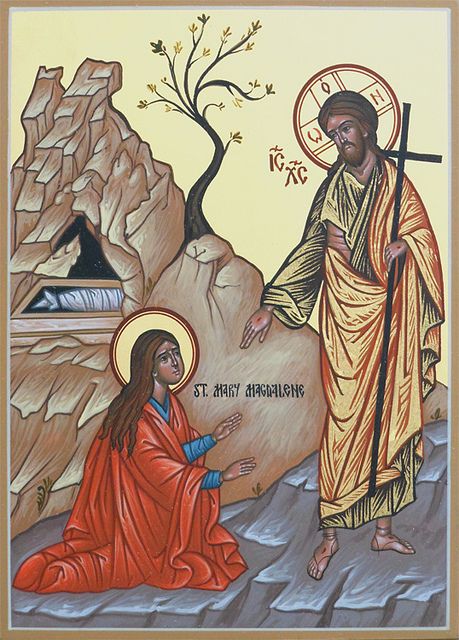

Recent Comments